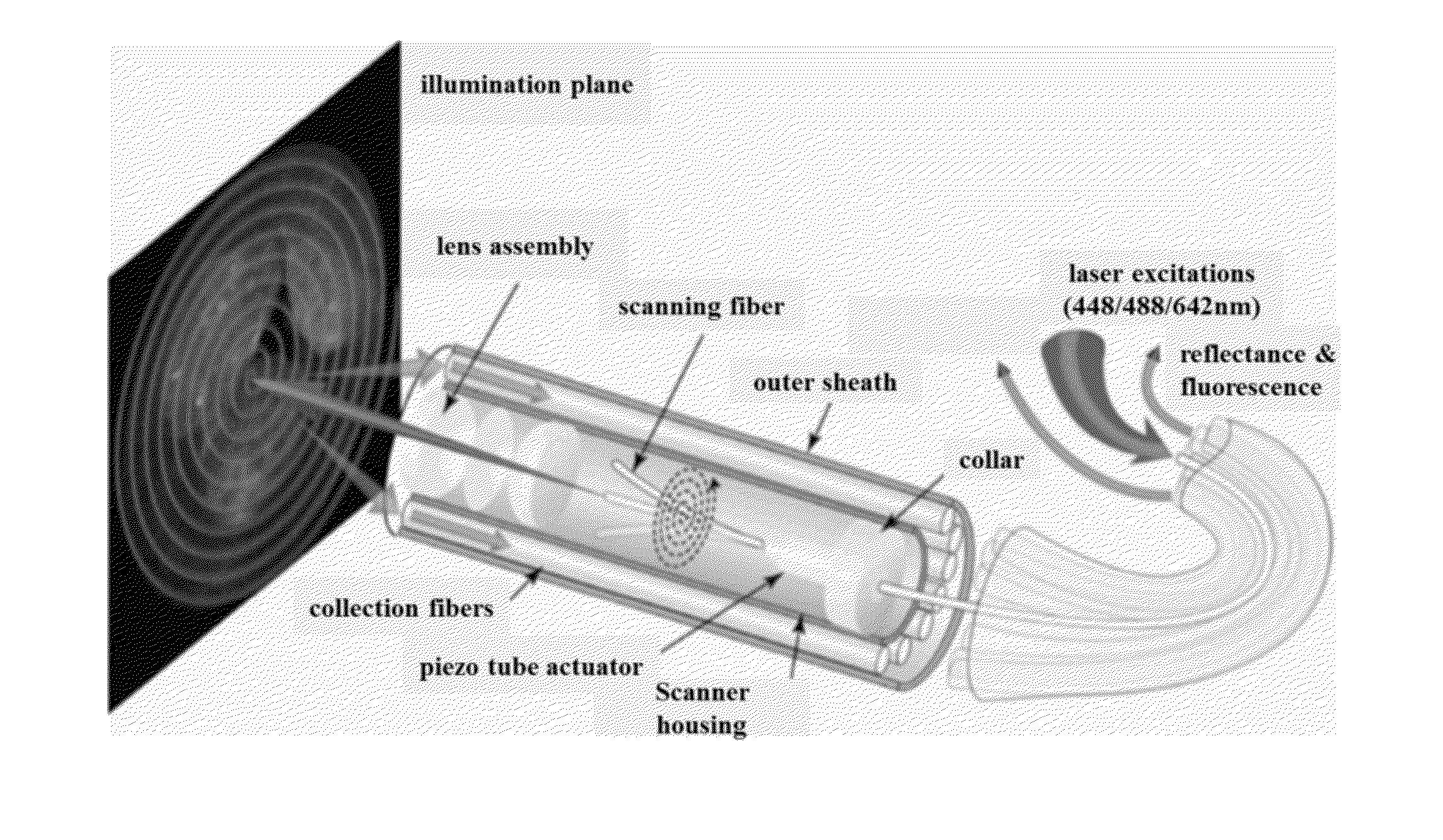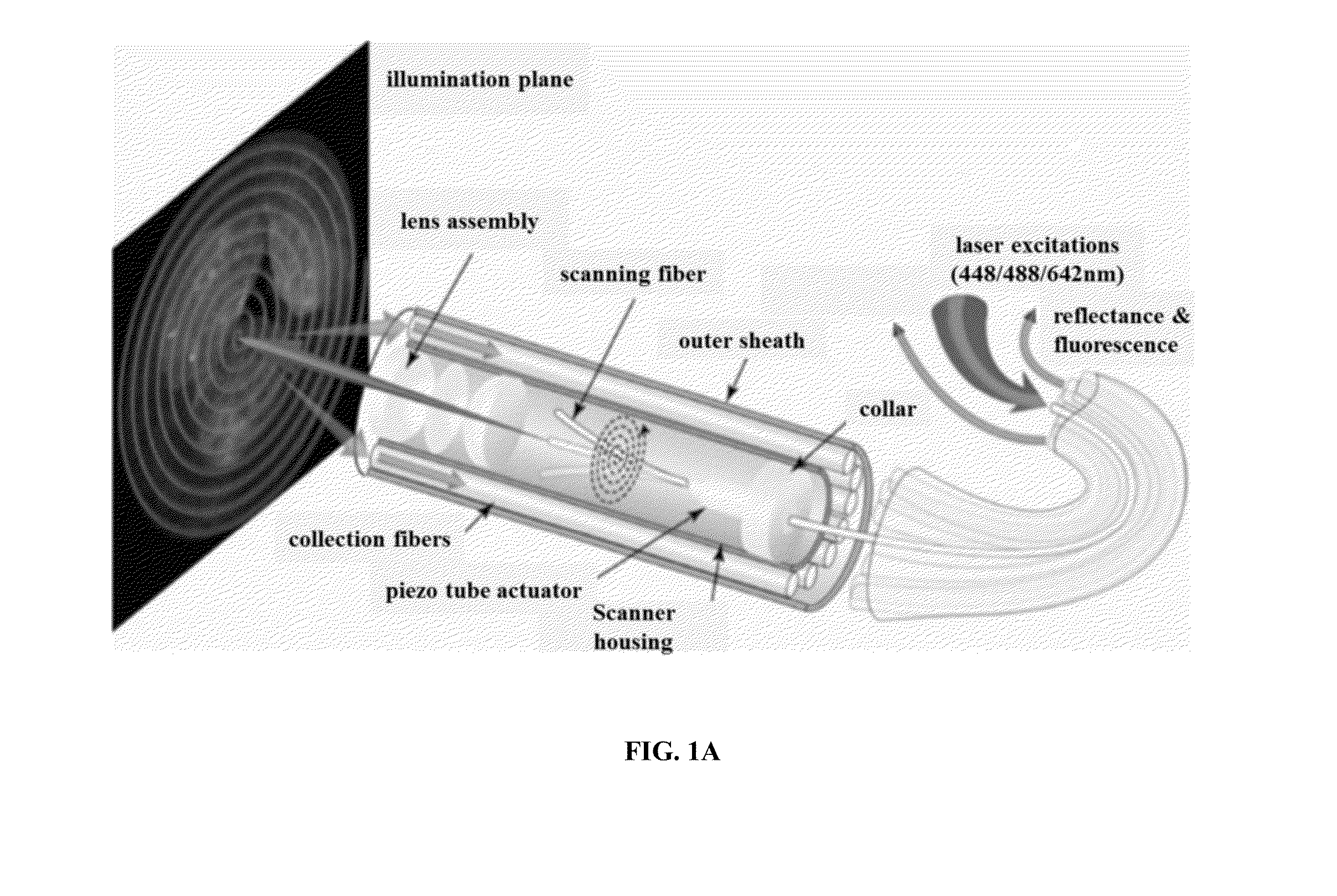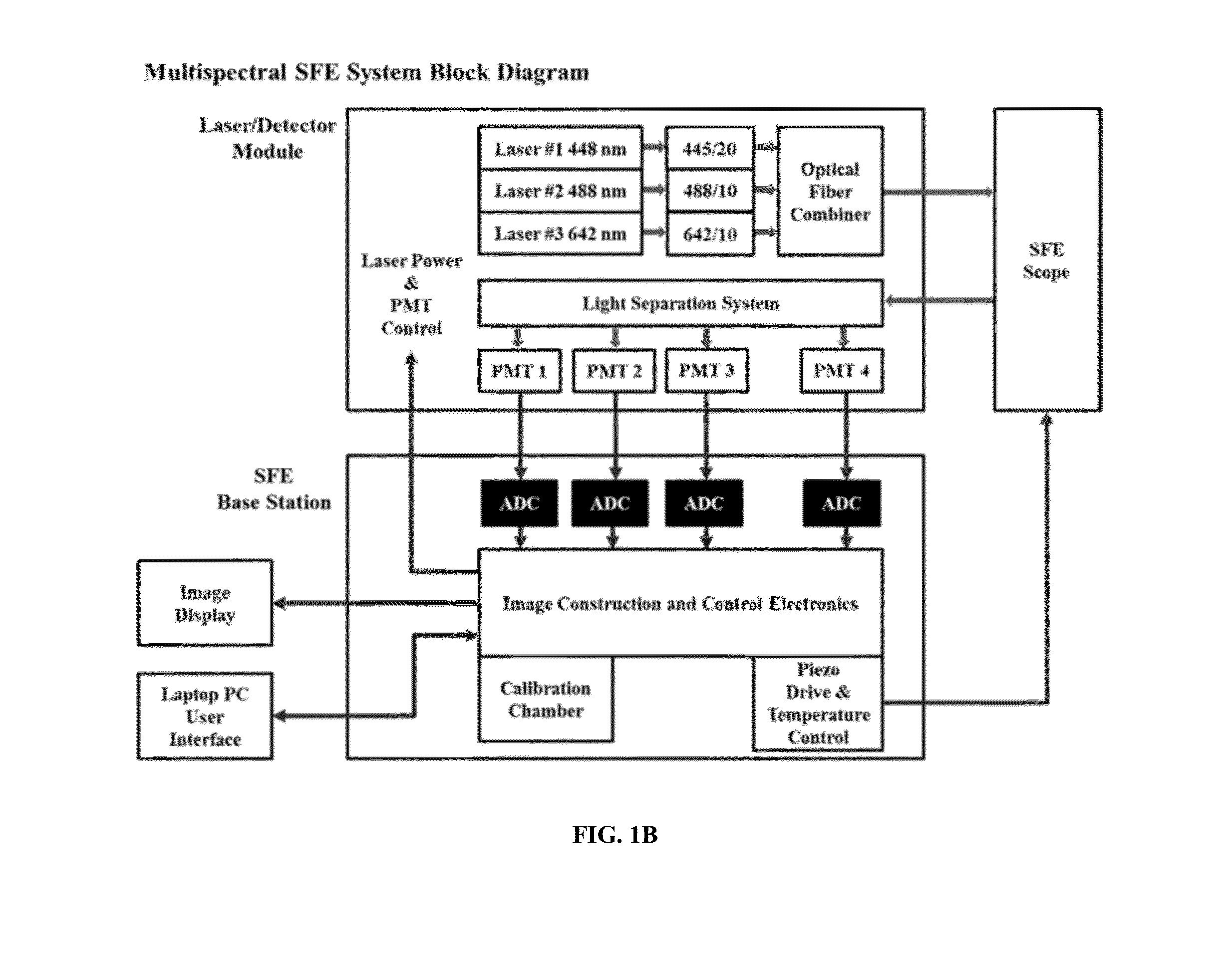Multispectral wide-field endoscopic imaging of fluorescence
a fluorescence imaging and multi-spectral technology, applied in the field of wide-field fluorescence imaging, can solve the problems of less than ideal prior methods and equipment for wide-field fluorescence imaging, less than ideal sensitivity and specificity for diagnosis of diseases of prior wide-field fluorescence imaging equipment, and less than ideal prior methods and equipment in one or more of many ways, so as to reduce one or more undesirable effects of interfering fluorescence signal, improve signal to background ratio, and reduce interferen
- Summary
- Abstract
- Description
- Claims
- Application Information
AI Technical Summary
Benefits of technology
Problems solved by technology
Method used
Image
Examples
example 1
Detection Sensitivity of Scanning Fiber Endoscope with Multiple Fluorescence-Reflectance Imaging Channels for Guiding Biopsy
[0201]This example is related to the above section titled “Scanning Fiber Endoscope with multiple fluorescence-reflectance imaging channels for guiding biopsy.”
[0202]The detection sensitivity of the SFE was evaluated with a series of small-volume (50 uL) and low-concentration (nanomolar to micromolar) fluorophore dilutions. All experimentation used low laser output powers of each channel (2.2 mW 448 nm, 3.2 mW 488 nm, and 5 mW 642 nm) measured with Newport optical power meter (Model 1830-C). In the current study, the fluorescein and Cy5.5 dyes were chosen for the sensitivity test, since they were to be used in the next step ex vivo or in vitro image applications.
[0203]The multispectral SFE detection sensitivity limit was 5 nanomolar for the fluorescein dye and 10 nanomolar for the Cy5.5 dye at video rate with signal-noise-ratio (SNR) at 2:1. The SFE detection c...
example 2
Application of Multi-Spectral Scanning Fiber Endoscope with Concurrent Autofluorescence Mitigation for Enhanced Target-to-Background Ratio Imaging
[0208]This example is related to the above section titled “Multi-spectral Scanning Fiber Endoscope with concurrent autofluorescence mitigation for enhanced target-to-background ratio imaging.”
[0209]Validation of the AF Mitigation
[0210]As illustrated in FIG. 3A-D, it is assumed that the AF emission spectral profiles were nearly identical for the 445-nm excitations and the 488-nm excitations, so that a constant ratio can be applied to AF1 (in the AF channel) to calculate AF2 (in the detection channel).
[0211]To validate this assumption, we acquired the individual AF emission spectra of the two excitation wavelengths using a quantitative fluorescence imaging instrument—the IVIS Spectrum (Perkin-Elmer, Norwalk, Conn.). Ex-vivo porcine esophagus epithelium tissue was used in this validation study for the imaging. Porcine esophagus is often used ...
example 3
Application of Color-Matched and Fluorescence-Labeled Esophagus Phantom
[0222]This example is related to the above section titled “Color-matched and fluorescence-labeled esophagus phantom.”
[0223]We developed a stable, reproducible three-dimensional optical phantom for the evaluation of a wide-field endoscopic molecular imaging system. This phantom mimicked a human esophagus structure with flexibility to demonstrate body movements. At the same time, realistic visual appearance and diffuse spectral reflectance properties of the tissue were simulated by a color matching methodology. A photostable dye-in-polymer technology was applied to represent biomarker probed “hot-spot” locations. Furthermore, fluorescent target quantification of the phantom was demonstrated using a 1.2 mm ultrathin scanning fiber endoscope with concurrent fluorescence-reflectance imaging.
[0224]Color Matching and Diffuse Reflectance
[0225]Initially paint recipes were formulated wherein constituent paint ratios were a...
PUM
| Property | Measurement | Unit |
|---|---|---|
| cross-sectional distance | aaaaa | aaaaa |
| time | aaaaa | aaaaa |
| time | aaaaa | aaaaa |
Abstract
Description
Claims
Application Information
 Login to View More
Login to View More - R&D
- Intellectual Property
- Life Sciences
- Materials
- Tech Scout
- Unparalleled Data Quality
- Higher Quality Content
- 60% Fewer Hallucinations
Browse by: Latest US Patents, China's latest patents, Technical Efficacy Thesaurus, Application Domain, Technology Topic, Popular Technical Reports.
© 2025 PatSnap. All rights reserved.Legal|Privacy policy|Modern Slavery Act Transparency Statement|Sitemap|About US| Contact US: help@patsnap.com



